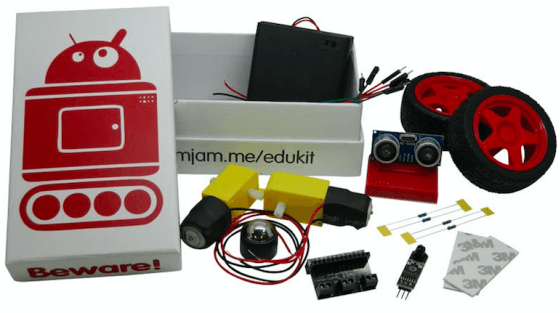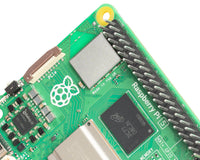
Raspberry Pi Roundup - 15th April 2016
CamJam EduKit 3 review

Cat Lamin is a primary school teacher (and Raspberry Pi Certified Educator) and has recently got hold of CamJam EduKit 3 Robotics. The kit is a collection of electronic components that will help you get started with robotics using the Raspberry Pi and costs £17 (plus delivery). Cat and her friend Louise set about following the EduKit worksheets, building and programming their robot and getting those motors spinning. The article is a great walk-through of the kit and is a well-balanced review. It’s given myself and Tim food for thought as to how we might improve the worksheets and the overall experience of the kit. Read the article here.
You can buy CamJam EduKit 3 Robotics from The Pi Hut.
You can read more about our series of EduKits and look at the worksheets here.
Unicorn pulses a beat
I was watching Pimoroni’s Bilge Tank today and Phil Howard mentioned that there was now a way in Ruby to run Neopixels (WS2812, I believe, I could be wrong) and therefore it wouldn’t be a stretch to get it to be able to control the UnicornHAT. I reasoned that, seeing as SonicPi was a Ruby-derived language, that SonicPi should therefore be able to control the UnicornHAT. Within the hour, I was tweeted by Wayne Keenan who had managed to do it using a Python server, sockets and a lot of know-how. Wayne has put all the code and some instructions up on GitHub – so head over there now to see how he did it. See the demo below
Bluetooth Network

By now, of course, everyone knows that the new Raspberry Pi 3 includes Bluetooth capability. Andrew Mulholland has made a video that shows you how to run a full network stack via Bluetooth using his Mac. If anyone can get this working on Windows as well, let me know! See the video below:
Wifi Range

Ward, from DorkbotPDX, has tried out two concepts for increasing the range and quality of his Raspberry Pi 3 wifi connection. I should point out straight away: this hack voids your warranty and FCC certification, and the soldering is a bit fiddly, so it’s not to be done lightly. If after this warning you still want to give it a try, head over to Ward’s website to read how to do it.





